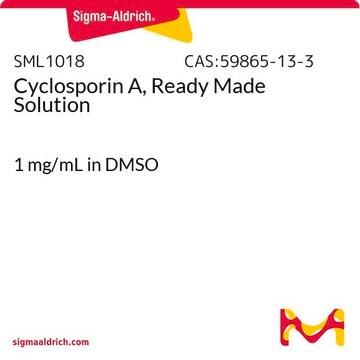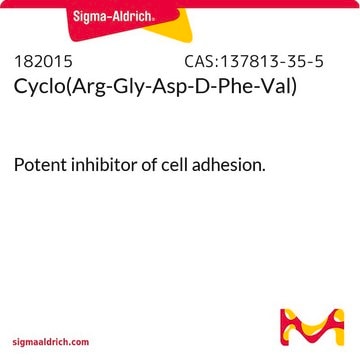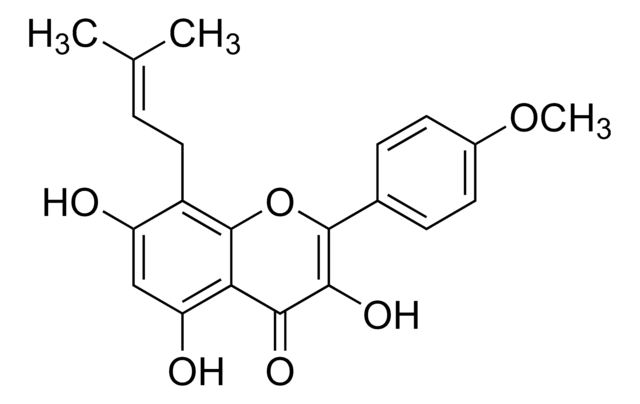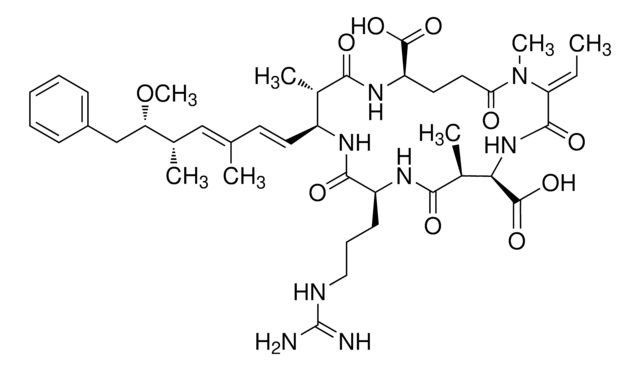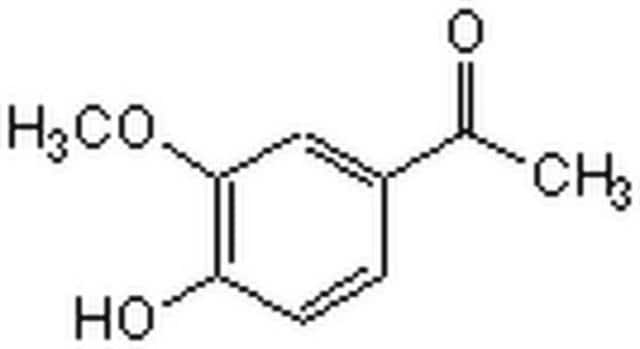SML1575
Cyclosporin H
≥97% (HPLC)
Synonym(e):
1,4,7,10,13,16,19,22,25,28,31-Undecaazacyclotritriacontane, cyclic peptide deriv, 5-(N-Methyl-D-valine)-Cyclosporin A
About This Item
Empfohlene Produkte
Biologische Quelle
Tolypocladium inflatum
Qualitätsniveau
Assay
≥97% (HPLC)
Form
powder
Optische Aktivität
[α]/D -100 to -115°, c = 0.5 in methanol
Lagerbedingungen
desiccated
protect from light
Farbe
white to beige
Lagertemp.
−20°C
InChI
1S/C63H113N11O12/c1-26-28-29-41(15)53(76)52-56(79)66-44(27-2)58(81)67(18)34-49(75)68(19)46(31-36(5)6)60(83)72(23)50(39(11)12)62(85)69(20)45(30-35(3)4)55(78)64-42(16)54(77)65-43(17)57(80)70(21)47(32-37(7)8)59(82)71(22)48(33-38(9)10)61(84)73(24)51(40(13)14)63(86)74(52)25/h26,28,35-48,50-53,76H,27,29-34H2,1-25H3,(H,64,78)(H,65,77)(H,66,79)/b28-26+/t41-,42+,43-,44+,45+,46+,47+,48+,50-,51+,52?,53-/m1/s1
InChIKey
BQQHPBPTWWXRMU-SXHXJWHLSA-N
Anwendung
- to pre-culture the lineage depleted murine Flt3ITDIDH2R140Q BM cells for transduction
- as a formyl peptide receptor (FPR) antagonist to study the role of FPR1 in calcium mobilization in polymorphonuclear leukocytes (PMNs)
- as one of the small molecules to study its effect on the homology-directed repair (HDR) editing efficiency in human-induced pluripotent stem cells (iPSCs) and T cells
Biochem./physiol. Wirkung
Signalwort
Danger
H-Sätze
Gefahreneinstufungen
Acute Tox. 4 Oral - Carc. 1B - Repr. 1B
Lagerklassenschlüssel
6.1C - Combustible acute toxic Cat.3 / toxic compounds or compounds which causing chronic effects
WGK
WGK 3
Flammpunkt (°F)
Not applicable
Flammpunkt (°C)
Not applicable
Analysenzertifikate (COA)
Suchen Sie nach Analysenzertifikate (COA), indem Sie die Lot-/Chargennummer des Produkts eingeben. Lot- und Chargennummern sind auf dem Produktetikett hinter den Wörtern ‘Lot’ oder ‘Batch’ (Lot oder Charge) zu finden.
Besitzen Sie dieses Produkt bereits?
In der Dokumentenbibliothek finden Sie die Dokumentation zu den Produkten, die Sie kürzlich erworben haben.
Kunden haben sich ebenfalls angesehen
Unser Team von Wissenschaftlern verfügt über Erfahrung in allen Forschungsbereichen einschließlich Life Science, Materialwissenschaften, chemischer Synthese, Chromatographie, Analytik und vielen mehr..
Setzen Sie sich mit dem technischen Dienst in Verbindung.
